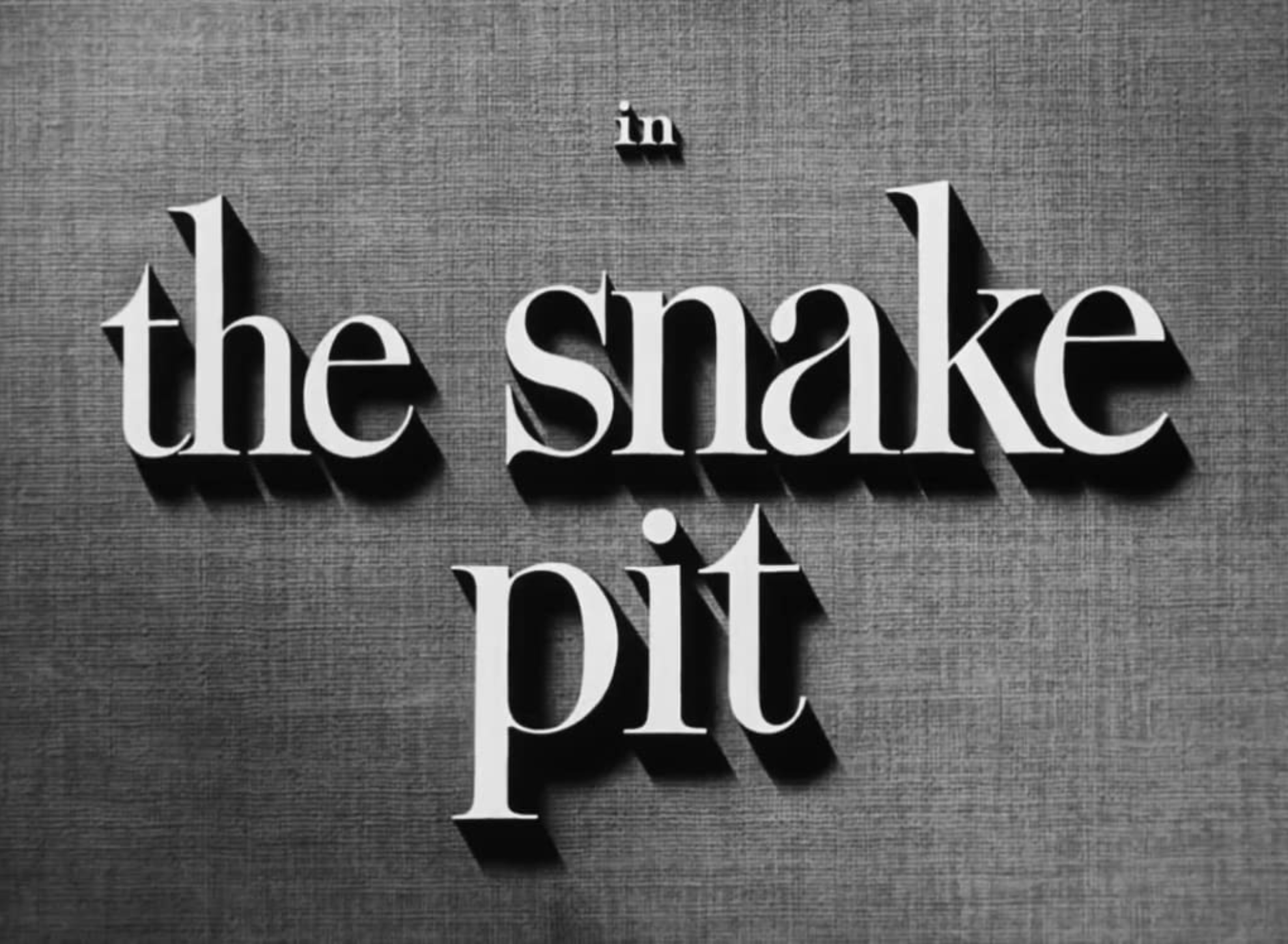5.13 The Snake Pit, 1946
Have you ever stumbled upon a book that brought so much more to your life than you first expected? That’s what happened to me with The Snake Pit, a 1946 novel I found in a second-hand bookstore in Vancouver. The book was a sensation when it was published, and was made into an award-winning film with Olivia de Havilland, but somehow I had never heard of it. In this episode I compare the book with the film, and uncover the bigger story behind The Snake Pit.
Listen to the episode here
Download a full transcription of the episode here:
More like this:
4.19 – Green Light: Gatsby and Lorde
Sources
The Snake Pit by Mary Jane Ward, published 1946
The Snake Pit, dir. Anatole Litvak, Twentieth Century-Fox, 1948
Alice’s Adventures in Wonderland by Lewis Carroll, published 1865
Quotes
“The novel is primarily an adventure story. The protagonist’s adventures in a mental hospital are as strange and weird to her as Alice’s in Wonderland.” – Lockridge, Larry. “The Story Behind The Snake Pit, Mary Jane Ward's Dark Comic Masterpiece.” LitHub, 8 Oct 2021 [Note: This article is an excerpt taken from Lockridge’s afterword in the 75th Anniversary edition of The Snake Pit.]
“The representation of her mind shifts from one pronominal station to another …” – ibid.
“writing in a book jacket blurb that ‘none of the characters of The Snake Pit ever existed in real life.’” – ibid.
“‘The Snake Pit’ is not autobiographical, but it was based in part on her own experience as a patient for nine months in a mental hospital …” – Harris, B. “The Snake Pit: Mixing Marx With Freud in Hollywood.” History of Psychology, 22 Apr 2021
“[Miss Ward’s] ability to make the plight of a patient in an insane asylum seem not just horrible or pitiful, but natural and understandable, is remarkable.” – Prescott, Orville. “Books of the Times.” The New York Times, 5 Apr 1946
“to those who have no credit at the store.” – Lockridge, ibid.
“[T]he scenarists have departed from the author’s subjective treatment of her experience in an insane asylum …” – Brady, Thomas F. “Hollywood Briefs.” The New York Times, 7 Sep 1947
“Miss Ward […] is content to be minutely observant rather than analytical …” – Kapp, Isa. “A Novelist's Dramatic View of Schizophrenia.” The New York Times, 7 Apr 1946
“[B]y following, through flashbacks, the drama of her earlier life, [the film] gives a good Freudian explanation for her illness, on which to base her cure.” – Crowther, Bosley. “‘Snake Pit,’ Study of Mental Ills Based on Mary Jane Ward’s Novel, Opens at Rivoli.” The New York Times, 5 Nov 1948
“whether this subject is apt for our screens which, as yet, make no general distinctions in the groups and ages to which they direct their appeals …” – Crowther, Bosley. “Question of Exhibition Raised by New Film.” The New York Times, 14 Nov 1948
“In an attempt to prevent “The Snake Pit” […] from being shown in Great Britain, 140 nurses and other members of the staffs of several mental hospitals sent a letter of protest …” – “British Nurses Seek Ban on ‘The Snake Pit’”. The New York Times, 29 Mar 1949
“a long fight to get the movie through British censorship.” – “London Sees ‘Snake Pit’”. The New York Times, 19 May 1949
“licensed for exhibition to adults only.” – ibid.
“the censor had deleted all sequences showing mental home inmates with straitjackets and lighter scenes which evoked audience laughter.” – “British Snip ‘Snake’ by 1,000 Ft.; For Adults.” Variety, 12 Apr 1949
“[A] spokesman for Twentieth Century-Fox […] declared that “it would be tragic if a protest of this kind prevented the people of the United Kingdom from seeing ‘The Snake Pit’” …” – “British Nurses Seek Ban on ‘The Snake Pit’”. The New York Times, 29 Mar 1949
“‘It wasn’t at all like the movie,’ said Mrs. Ida Silon of Manhattan Beach …” Freeman, Lucy. “100 Visitors Tour Mental Hospital.” The New York Times, 29 Apr 1949
Further reading
Mary Jane Ward’s novel was at first rejected by publishers because of the success of a similar book published in 1944: Brainstorm by Carlton Brown. Its fame quickly faded. The author never wrote anything else and he and his book have left little trace on the internet. Here’s the 1944 New York Times review by John K. Hutchens.
Thirteen years later, and Mary Jane Ward’s novel is used as the benchmark for all books about mental illness. The NYT review of Eileen Bassing’s 1957 novel Home Before Dark, about a woman returning home from a mental institution, was titled “Snake-Pit Aftermath.”
The general public also had their say on The Snake Pit, writing into The New York Times with their own ‘letters to the editor’ and ‘mailed opinions’. Robert Downing of New York City was more than displeased with Bosley Crowther’s article “Question of Exhibition”. Meanwhile, Pauline Leader of New York City “urge[d] all hard of hearing and deaf people to see ‘The Snake Pit’”.
Here’s the timeline of The Snake Pit trying to get through the British Board of Film Censors for exhibition in the UK (as covered by the Ameircan press):
29th March, 1949: “British Nurses Seek Ban on ‘The Snake Pit’”.
12th April, 1949: “British Snip ‘Snake’ by 1,000 Ft.; For Adults.”
19th May, 1949: “London Sees ‘Snake Pit’”.
19th June, 1949: “British Review ‘Snake Pit’”.
5th July, 1949: “English Town Bans ‘Snake Pit’”.
***
My Instagram, Goodreads and StoryGraph
The Community Library’s Instagram
Cover artwork is by Ashley Ronning
Ashley’s Instagram, website, and printing studio website
